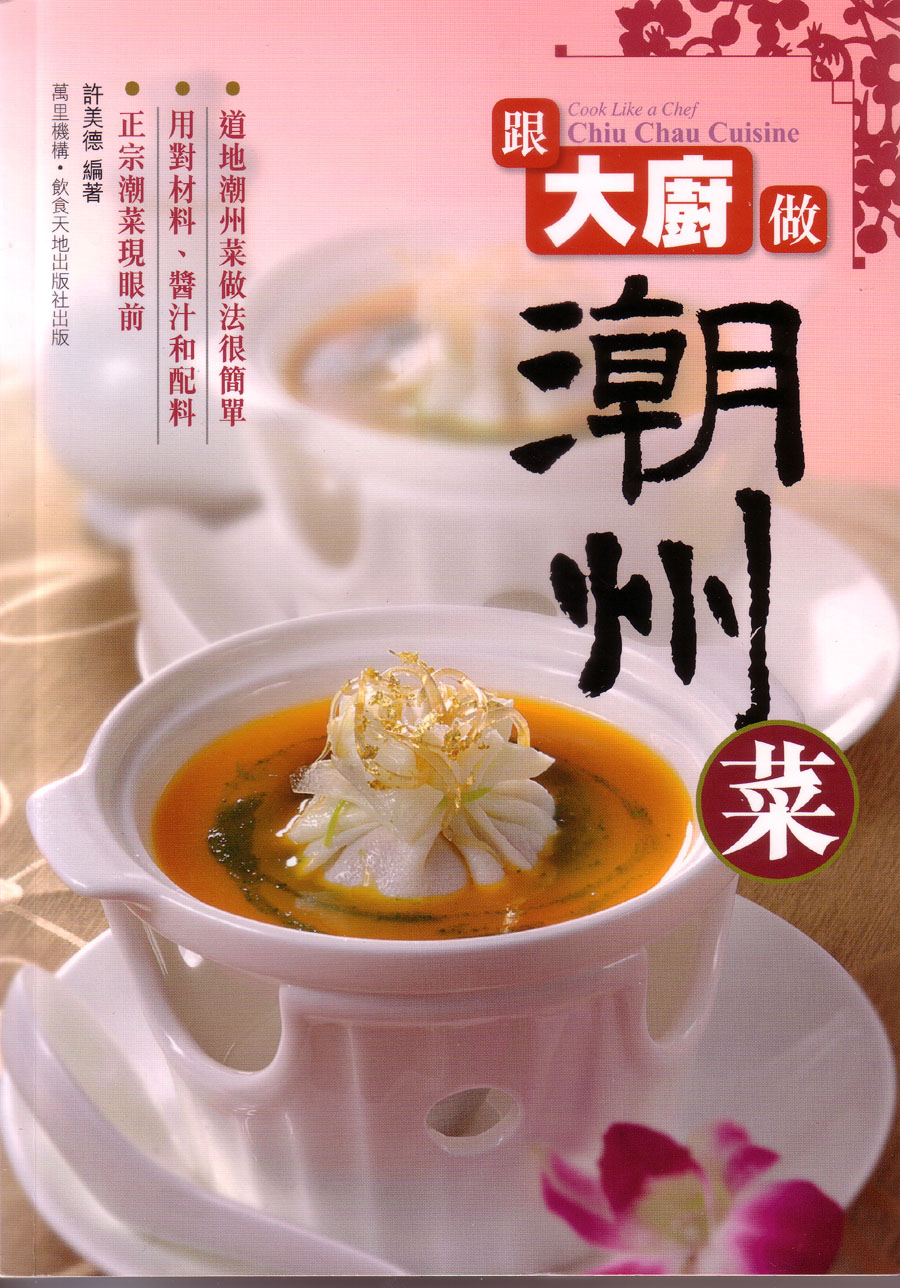
| What is Flavor and Fortune? |
| How do I subscribe? |
| How do I get past issues? |
| How do I advertise? |
| How do I contact the editor? |
Read 13376045 times
Connect me to:
| Home |
| Articles |
| Book reviews |
| Letters to the Editor |
| Newmans News and Notes |
| Recipes |
| Restaurant reviews |
| Article Index (all years, slow) |
| List of Article Years |
| Article Index (2026) |
| Article Index (last 2 years) |
| Things others say |
| Related Links |
| Log In... |
| Authors |
| Categories & Topics |
Chiu Chau Cuisine by Meida Xu
by: Meida Xu
Hong Kong China:
Wan Li Book Company 2012, $98.00, Paperback
ISBN: 978-962-14-4782-1
Reviewed by: Jacqueline M. Newman
Fall Volume: 2014 Issue: 21(3) page(s): 18 and 19
 This book is in Chinese, but every recipe is translated into English at its end. Each has a beautiful color photograph of its completed dish, the individual foods discussed only in the Chinese section.
This book is in Chinese, but every recipe is translated into English at its end. Each has a beautiful color photograph of its completed dish, the individual foods discussed only in the Chinese section.
The English recipes can be easily followed as they are translated by Marianne at Telc. Originally written by a professional chef whose picture graces the front fly-leaf of the cover, the ones we tried are very good. Sent to me by a chap I met in China, I must confess I know not what his association with the book or its author may be; and I am still trying to clarify that.
Chiu Chau, also known as Swatow, Teochew, Chiu Chow, Chaozhou, and Chaoshan, is known for its seafood and braised dishes, and for a very strong tea known as Tit Kum Yung which in English is known as Iron Goddess of Mercy. The book's brined preparations, and those with sa cha sauce, dried fish and seafood, and the shark's fin and bird's nest dishes that are well known and from this region do not appear in this book. We are trying to figure out why not and clarify that, as well.
The recipe categories include items to put on platters, those made with fresh and dried seafood, meats, vegetables, rice, noodles, congee dishes, sweet soups, and one that is a sweet fried dumpling. As there are very few Chiu Chow cookbooks and very few recipes from this region in other cookbooks, we do think this is an important addition to those wanting to know about this cuisine. The ones we tried were very good.
For those not knowledgeable, this cuisine is from east of Guangdong and can be spelled as the title does, also as indicated above. The omelette recipe made with baby oysters is similar to one we had when visiting the Chiu Chou restaurant at Ngong Ping's large eatery ans appears after this review. Everyone from Chiu Chau tells us this dish is a classic and should be known because it originated there and is still popular there.
In our collection of more than four thousand Chinese cookbooks gifted to Stony Brook's Special Collections library, there are only four cookbooks from this region. They share many identical or similar recipes as those found in this book; and they were written by Shiao and Xiao, probably the same lady spelled two ways, by Lee, and by To. They are annotated at the Stony Brook web site.
| Chao Zhou Oyster Omelet |
|---|
1/2 pound baby oysters, shelled 5 Tablespoons potato starch 1 teaspoon minced scallion 1 teaspoon minced coriander leaves 1 Tablespoon vegetable oil 5 eggs, whisked 1 teaspoon fish sauce dash of ground pepper 1/2 teaspoon MSG, optional Preparation: 1. Mix oysters, sweet potato starch, a scallion, coriander leaves, and sauce, MSG if used, and the ground pepper. 2. Heat wok or fry pan, add the oil, and pour in the oyster mixture, then add the beaten eggs, turn heat somewhat lower, and fry the egg mixture until set on one side, turn over and cook until it is set on the other side. Top with coriander leaves, and serve. |

Copyright © 1994-2026 by ISACC, all rights reserved
Address
3 Jefferson Ferry Drive
S. Setauket NY 11720